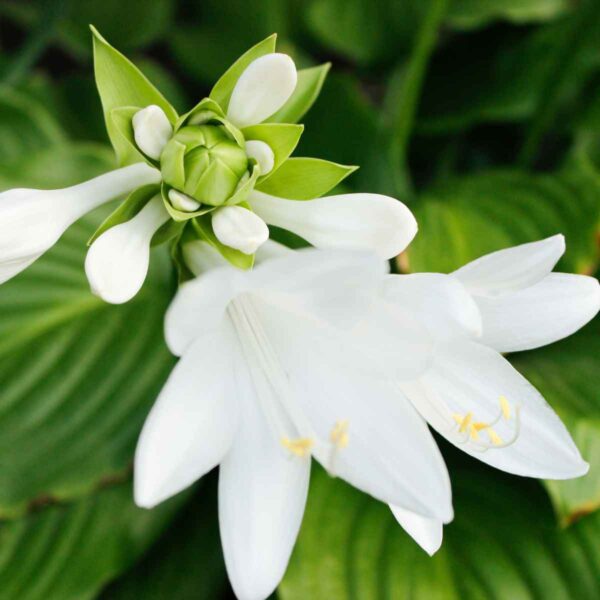6 Ways to Kill Cucumber Beetles, Organically
on May 14, 2020, Updated Oct 28, 2023
This post may contain affiliate links. Please read our disclosure policy.
Cucumber Beetles don’t take long to wipe our your cucumber, pumpkin, squash, and other cucurbit plants. If you don’t get a handle on them quickly they will wreak havoc in your garden. Here are 6 organic methods of pest control to rid your garden of the dreaded cucumber beetle.

For three years in a row now, I have lost my cucumber crop to the blasted cucumber beetles. One of my favorite foods to preserve from the garden is my Grandmother’s Secret Dill Pickles, and so the loss of my cucumber crop really breaks my heart. Last year I was able to can a few quarts because some good friends gave me some of their excess cucumbers, but I have not had a good pickle canning session for many years now.

Do you see that nasty little yellow and black striped bug on my cucumber plant? They may look all cute and harmless BUT let me tell you, they are real, real pests. They are very destructive.

Besides being able to eat cucurbit leaves in a matter of days, they also cause bacterial wilt which kills the plants. I can live in harmony with many bugs, but not these guys. Killing my cucumbers means war, and I am tired of losing that war!! I’ve tried a few things to kill cucumber beetles over the last few years, but nothing’s been successful. Until this year. This year, I caught them early. And I struck hard and I struck fast.
6 Ways to Kill Cucumber Beetles, Organically
This year, I turned to Diatomaceous Earth. Last year, when I found the dang beetles, I read that food grade Diatomaceous Earth can be used as an organic insecticide, so I ordered a 50 pound bag from Azure Standard. According to the National Pesticide Information Center, Diatomaceous Earth is a type of silica made from the fossilized remains of diatoms. It’s a fine, white powder and it’s edible. Under a microscope, it supposedly looks like shards of glass and it is deadly for any bugs with an exoskeleton, like cucumber beetles, and fleas, and all sorts of nasty parasites. You can read more here at this useful article by Paul Wheaton.
I have read that you should be careful not to inhale DE, but last year when my husband suffered from intestinal parasites, I broke out the DE and made him drink some diluted with water. He also insisted on taking a course of antibiotics, but I have read that DE will do the trick without the antibiotics. So file that tidbit of information away for the next time you get intestinal parasites {or head lice…}.


Essentially, the way I killed my cucumber beetles was to dump 100% Food-Grade Diatomaceous Earth all over my cucurbits. I lifted the leaves and doused it good on the underneath since the cucumber beetles like to hang out on the underneath side of the plants. And I covered the dirt all around the plants, too. Because despite having read that cucumber beetles don’t crawl around, I see them crawling all over the ground. So I think they do crawl.The first day I found the cucumber beetles, they were all over. I thought about the situation for a few minutes {because I had to remember WHY I bought that big bag of DE last year…} and headed out to my garden shed. I grabbed the DE and spread it all over using the method I described above.
The next day, I checked on my garden. Instead of finding hundreds of them, I found maybe 10. And I killed them all. The next day, I found ZERO cucumber beetles and I was very encouraged. However, after a few days, 5 maybe, I started finding a few more beetles, so today I covered them all up again with more Diatomaceous Earth since I am going away for 5 days and won’t be able to check on them. It is so helpful to be in the garden every single day to see find stuff like this. I’ve left strict instructions with my husband to be on the lookout for cucumber beetles!
Other organic methods for killing Cucumber Beetles:
- NEEM Oil – this is the first thing I tried. I’m guessing that it didn’t work because I was just too late. I didn’t know right away how destructive they were, and by the time I got the NEEM Oil, it was probably too just late. But it is supposed to be effective.
- Delay planting – planting your cucumber plants a little later in the season is another way to foil cucumber beetles. If you can wait to plant your cucumbers by a few weeks, you might have luck warding off the blasted beetles. Start them in your home instead and set them out when they are bigger and better able to fight off the beetles.
- Row covers – The aren’t that hard to make and they are effective. The one word of caution is that your plants still need to be pollinated so you will have to uncover the rows while the plants are flowering. Learn how to easily cover a raised bed in this post.
- Companion plant – certain crops can help repel cucumber beetles. Companion planting can be very effective when done correctly. Nasturtiums, onions, and radish are great plants to include in your cucurbit area to help keep the cucumber beetles at bay. For more companion planting ideas, read this post.
- Trap crops – some cucurbits are less susceptible to bacterial wilt than others. A good trap crop to plant is the blue hubbard squash. For some reason, cucumber beetles really like this squash and don’t harm it as much as they do other crops.
Cautions I have read about DE –
I read not to use the DE on flowering plants as it also kills the bees that pollinate the plants. A very helpful person on my facebook page told me that I can manually pollinate the plants with a Q-Tip, if need be. One of my plants was already flowering and I am spreading the DE anyway. It does have baby cucumbers on it, so we’ll see what happens.
Otherwise, my garden is growing good. I did find one more bad garden pest on my potatoes, and I will tell you about that soon! But everything else is looking really nice.

Have you ever dealt with cucumber beetles? What did you do? And most importantly, how do you stop them from coming back next year? I am really considering burning my garden this year after it’s done.
Welcome to the HOW TO KILL GARDEN PEST SERIES!
Who knew gardeners could take such pleasure in murdering annoying garden pests. If you garden, you’ll want to check out on the posts in this HOW TO KILL series. I’m adding new posts to this series each week, so subscribe to my newsletter if you want to know when they’re ready!
- How to Kill Cucumber Beetles
- How to Kill Potato Beetles
- Murdering Japanese Beetles
- How to Kill Squash Bugs
- Organic Pest Control for Squash Vine Borers
- Tomato Horn Worms – How to Kill!
This post, though, is all about the Cabbage Worm: how to identify, how to kill, how to prevent. So let’s get on with it!














Ooo, will the DE work on ants too do you suppose? Maybe I need to get some. I don’t put down borax because of the cats.
Do post an update about the beetles when you get back! I am interested in hearing how this works out.
As long as ants have an exoskeleton, I guess it would work. I posted a pretty effective homemade ant bait: https://simplifylivelove.com/2013/05/frugal-friday-effective-homemade-ant-bait.html. I’ll let you know how it works out!! Fingers crossed!
@Michelle, a mix of equal parts borax and white sugar will kill ants. They take it to their nest and it kills all.
Have you tried parasitic nematodes? They’re expensive, but I’ve read good things about them.
I have not tried parasitic nematodes but I have read that they work! Thanks for the suggestion.
They are only good for soil dwelling organisms. I am using DE now. I found them early and only a few a day. I crush a group of eggs under a leaf and the adults when I see them. Just dusted today.
how do Striped Cucumber Beetles drink?
It’s good to hear your garden is growing well. The potatoes story must be an interesting one, too.
To minimize impact on honey bees, spread the DE in the evening after the cucumber flowers close for the night. The bees to not typically crawl around on the leaves or ground and the beetles do not infest the flowers much.
I tried food grade DE on my plants last summer and it destroyed my 4 pepper plants, and my mint and tomato lost their leaves and had to struggle back. Definitely interfered with tomato production.
What happened?
Hi Ann, I’ve never heard of that happening with DE. 🙁 Are you sure it was because of the DE? How and where did you apply it?
How often did you have to reapply the DE? How did it work out for the season? I read this today and ran outside to spread the DE as my Zucchinis are affected by the yellow striped bugs. I have DE on hand because I have chickens.
Thanks
Hi Paula, you have to reapply after a rain or every 4-5 days or so. It works well for a while and then I give up, honestly. It just depends on how badly the bugs have infected your plants before you start. If I catch them quickly and treat early I have much more success than if they get out of hand before I do anything. Good luck!!
I’ve used DE on all my plants to control aphids (particularly on my pepper plants), leafhoppers, and now cucumber beetles. I have never had it harm any plant whatsoever. I live on a farm in the Texas panhandle, and am surrounded by wheat and corn crops; and also have a pasture that naturally grows buffalo gourds (which grow from enormous tubers and spread like wildfire if attempted to dig up). The buffalo gourds stay covered in cucumber beetles, which I felt was luring in the beetles closer to my garden ( I’ve now decided it’s likely irrelevant after keeping them torched to the ground multiple seasons and still fighting cucumber beetles like crazy). I use row covers, companion plants, & surround, which works very well, but requires reqular reapplication to new growth and after rains; and is just Extremely messy, but it is the only way I’ve found to have any kind of cuc/pumpkin harvest. This year, after still loosing my pumpkin plants last year to bacterial wilt, I’ve decided to grow these plants in my greenhouse and hand pollinate. I’m using the DE in the greenhouse heavily, as yes; I’ve still caught a couple beetles inside the greenhouse. I have not applied the surround yet, if I can keep things under control with the DE (hoping). I love spinosad for many pests, but for the level of beetles I have, it’s simply not effective (Captain Jack’s dead bug brew and fertilome brands). I’ve also used peppermint oil diluted as a spray which the plant leaves did seem to love, but not effective with beetle war and counter productive if using surround or DE. Traps/lures also found to be useless (caught a couple, but hundreds on plants). Greatest of luck to anyone else struggling with these demons!
Thanks for your perspective. They really are the most horrid of all garden pests that I’ve dealt with. Hope the greenhouse growing goes well! <3
Going from a large number to just around ten is quite the accomplishment. It must have really startled you when you saw the masses for the first time.
Going from a large number to just around ten is quite the accomplishment. It must have really startled you when you saw the large group for the first time.
What a quick and simple way to get rid of such a destructive insect! Thanks for providing the safety tips for handling DE as well, you definitely don’t want to end up hospitalized for making such a simple mistake. Great guide!
you can try salt. 1 liter water and 1/2 teaspoon of salt. then spray it every morning. Salt is also source of nitrogen and its good for plants
Salt is Sodium Chloride, which has no nitrogen at all. Are you perhaps confusing the chemical symbol Na (sodium) with N (nitrogen)? Most plants have tolerance only to a small amount of salt and overdoing it could easily mess up the carefully balanced pathways of water and nutrients in the root system.
With the nationwide demise of important bees, I can’t fathom how you can advise people to just overlook the fact that their use of DE will further destroy local bees populations. And of course, dead-no bees in your garden means no fruit. Is this really the most thoughtful and educated approach to gardening? Golly.
My thoughts exactly!
After cucumbers coming out my ears for two months cucumber beetles put the skids to production . I have been spraying with water & Dawn every evening & it is helping. Watch my butternuts like a hawk & kill all I can find. Will be burning EVERYTHING from the garden as it is done!